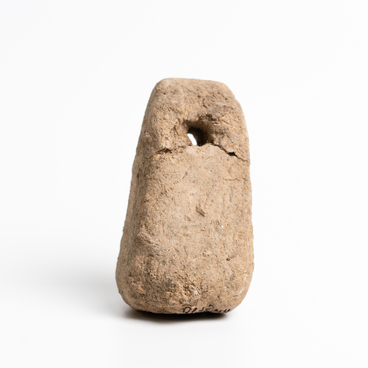One of the most revered figures in ancient Chersonesus was Heracles. This hero and demigod was considered the patron of the city and its chora (agricultural lands). He was seen as the protector and savior not only of Chersonese as a whole but also of individual citizens. The findings from excavations in Chersonesus and its surroundings demonstrate that there was a sophisticated cult of Heracles. One of its most significant aspects was that his image was Chthonic, or connected with the afterlife. In general, the cult of heroes was closely linked to the cult of the deceased. This connection is largely due to the similarity between the cult of heroes and the cult of ancestors.
In 2007, a stone tower was discovered in the center of the Kulchuk settlement. It had two or three floors, with the upper floors made of air-dried bricks. Inside the tower, there was a stone in-situ arch, which was the only one of its kind in the Northern Black Sea region. In 2008, on the outer wall of the tower, a limestone slab was unveiled, depicting Heracles at a feast. This was a truly unique find, as the high relief had been preserved in its original location. The relief shows the Greek hero, Heracles, feasting on Mount Olympus. He is depicted with a beard and reclining on the skin of the Nemean lion, spread on a sofa with a backrest. His left arm is bent at the elbow. In his left hand, he holds a kantharos (a wine jug), with the right hand resting on his waist. His arm muscles are well sculpted. His legs are crossed, with his right leg resting on his left. To the left of his legs, there is the lower part of a club, which is inclined to the right.
The upper left corner of the relief has a chip. It is noticeable that some elements were also lost in the upper right corner — the head of the demigod has been lost. However, the lion’s head with a mane, on which Heracles’ left elbow rests, and the front paw of the lion’s skin are well preserved. This relief belongs to the artistic tradition of the last quarter of the 4th century BCE. It may be a later imitation made at the turn of the 2nd century BCE when the pyramid of the tower was constructed. The height of the relief plate is 29 centimeters, and the length is 53 centimeters. The depth of the relief image is up to 9 centimeters, and the thickness of the plate is up to 16 centimeters.
Heracles is one of the most famous figures in ancient Greek mythology. He was the son of Zeus and Alcmene.


